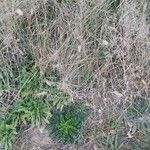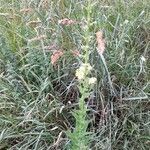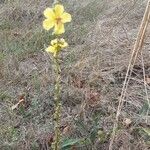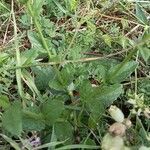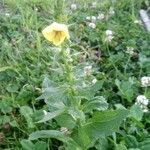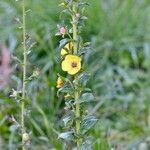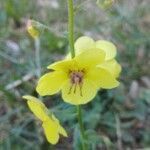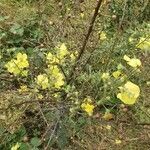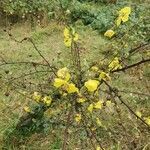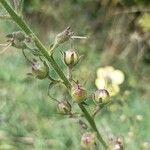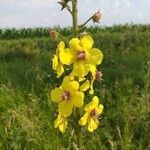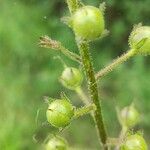Annuals or biennials. Stems unbranched, sparsely glandular hairy above. Basal leaves subsessile or basally attenuate as if petiolate; leaf blade oblong, to 10 X 4 cm, margin obtusely serrate to basally pinnately lobed. Stem leaves gradually decreasing in size upward and becoming bracteal; leaf blade oblong-lanceolate, margin irregularly and shallowly toothed. Raceme somewhat branched, to 50 cm. Rachises, pedicels, and calyces glandular pilose. Flowers solitary at each node. Pedicel 5-10 mm. Calyx 5-6 mm; lobes oblong-lanceolate. Corolla yellow; upper lobes 3, woolly at base. Stamens 5; filaments purple woolly; anthers of anterior 2 stamens decurrent at base. Capsule ovoid, 7-8 mm, longer than persistent calyx, apically sparsely glandular pilose, apex short beaked. Fl. May-Jun, fr. Jul-Aug.
Stems slender, to 1.5 m, simple or branched, glandular-hairy above, without branched hairs; lvs variable, narrowly triangular to oblong or lanceolate, sessile, not decurrent, coarsely toothed to subentire, glabrous, the basal larger, oblanceolate; racemes elongate, loose, with a single fl at each node on a pedicel 8–15 mm; cor 2–3 cm wide, yellow or white, usually with an anthocyanic center, the filaments all about equally beset with purple-knobbed hairs; 2n=18, 30, 32. Native of Eurasia, established as a weed in disturbed sites throughout our range. June–Oct.
